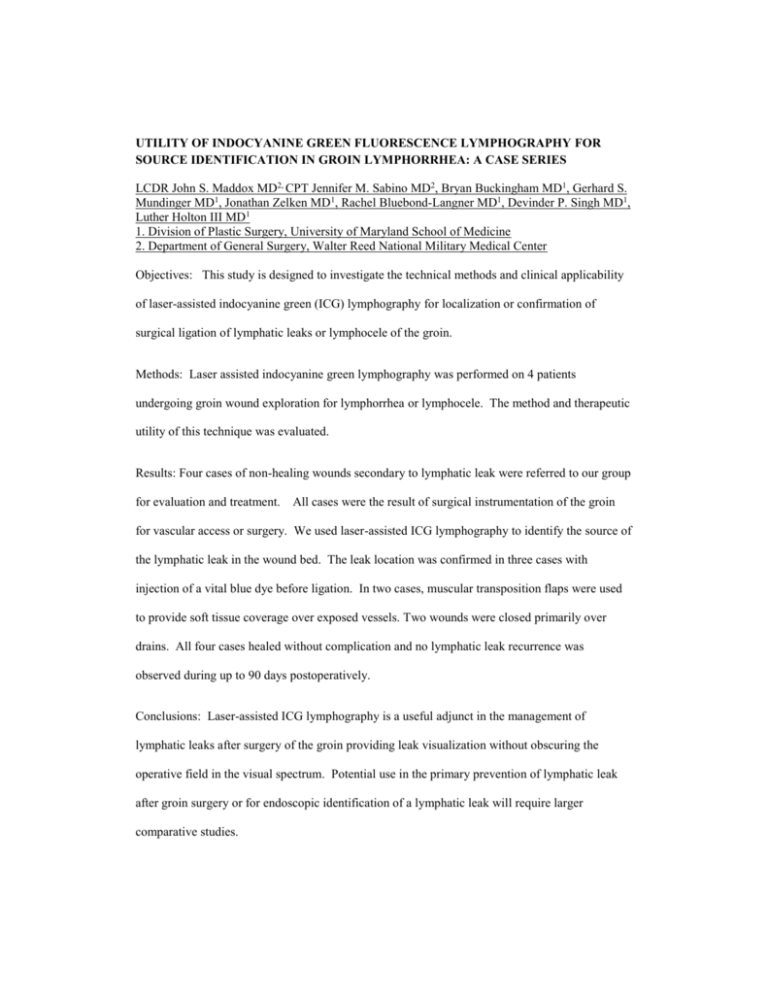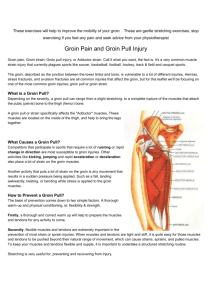Methods: Laser assisted indocyanine green lymphography was
advertisement

UTILITY OF INDOCYANINE GREEN FLUORESCENCE LYMPHOGRAPHY FOR SOURCE IDENTIFICATION IN GROIN LYMPHORRHEA: A CASE SERIES LCDR John S. Maddox MD2, CPT Jennifer M. Sabino MD2, Bryan Buckingham MD1, Gerhard S. Mundinger MD1, Jonathan Zelken MD1, Rachel Bluebond-Langner MD1, Devinder P. Singh MD1, Luther Holton III MD1 1. Division of Plastic Surgery, University of Maryland School of Medicine 2. Department of General Surgery, Walter Reed National Military Medical Center Objectives: This study is designed to investigate the technical methods and clinical applicability of laser-assisted indocyanine green (ICG) lymphography for localization or confirmation of surgical ligation of lymphatic leaks or lymphocele of the groin. Methods: Laser assisted indocyanine green lymphography was performed on 4 patients undergoing groin wound exploration for lymphorrhea or lymphocele. The method and therapeutic utility of this technique was evaluated. Results: Four cases of non-healing wounds secondary to lymphatic leak were referred to our group for evaluation and treatment. All cases were the result of surgical instrumentation of the groin for vascular access or surgery. We used laser-assisted ICG lymphography to identify the source of the lymphatic leak in the wound bed. The leak location was confirmed in three cases with injection of a vital blue dye before ligation. In two cases, muscular transposition flaps were used to provide soft tissue coverage over exposed vessels. Two wounds were closed primarily over drains. All four cases healed without complication and no lymphatic leak recurrence was observed during up to 90 days postoperatively. Conclusions: Laser-assisted ICG lymphography is a useful adjunct in the management of lymphatic leaks after surgery of the groin providing leak visualization without obscuring the operative field in the visual spectrum. Potential use in the primary prevention of lymphatic leak after groin surgery or for endoscopic identification of a lymphatic leak will require larger comparative studies.










